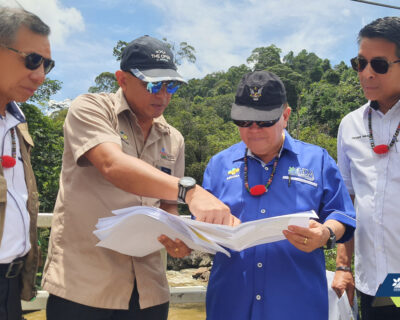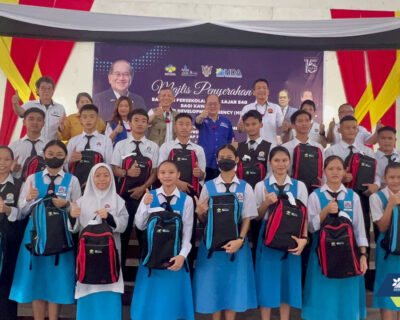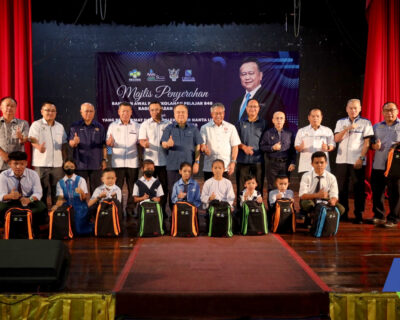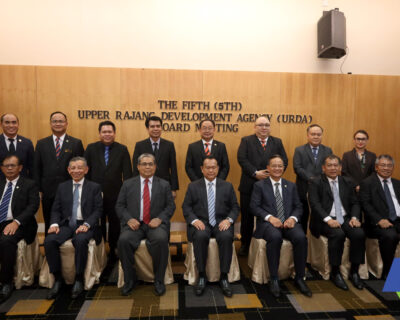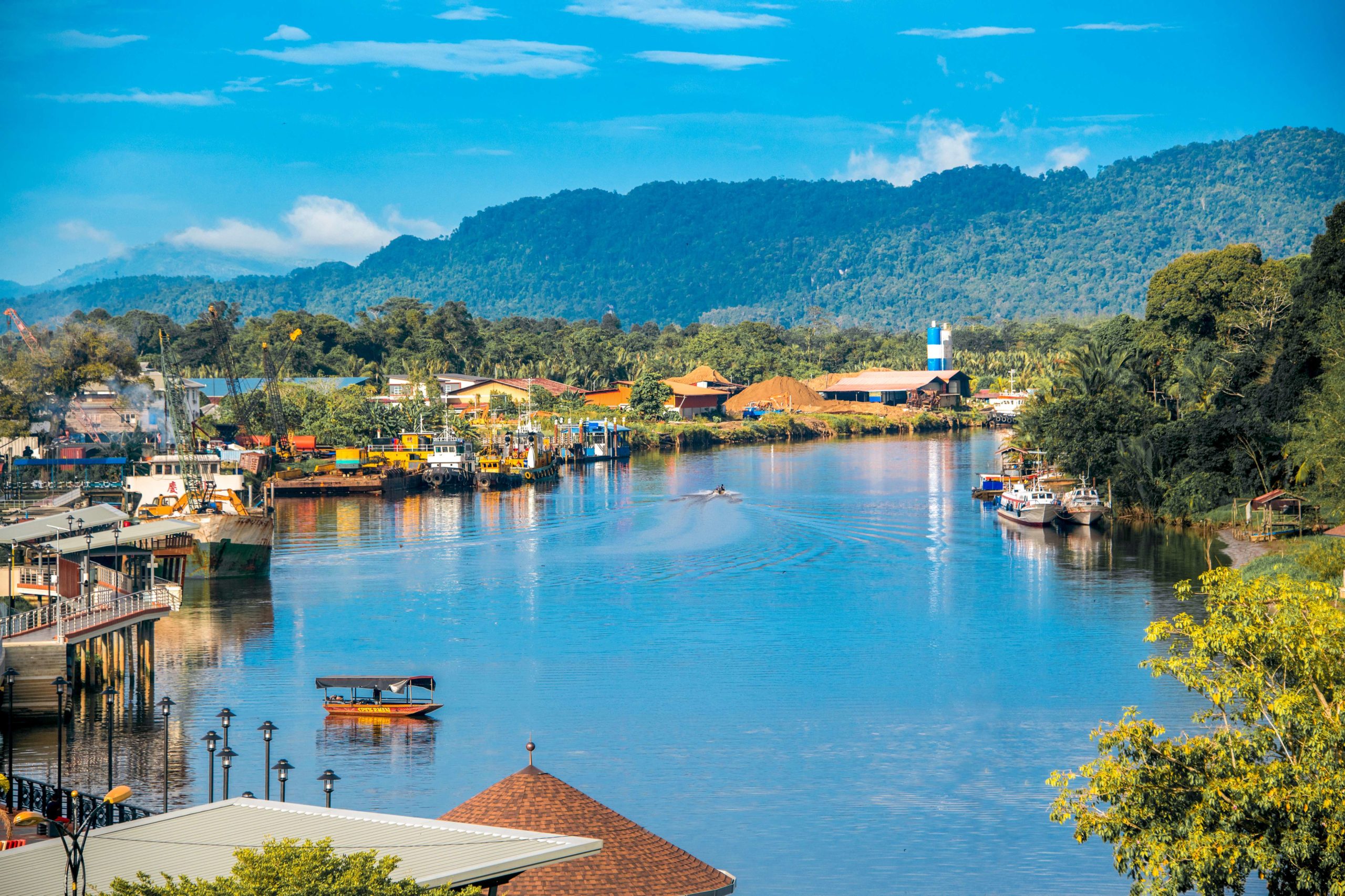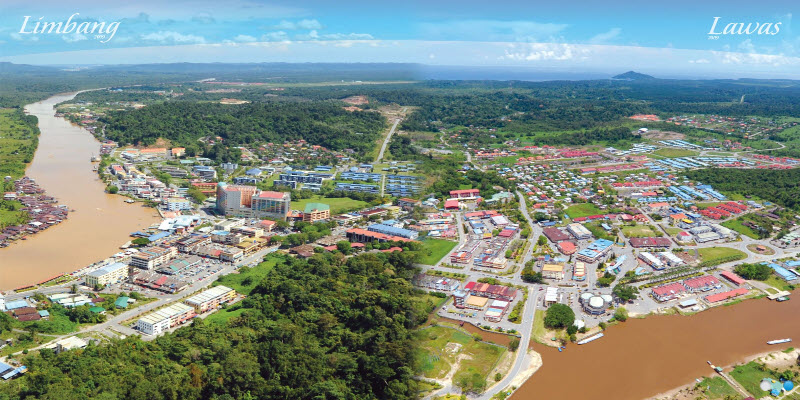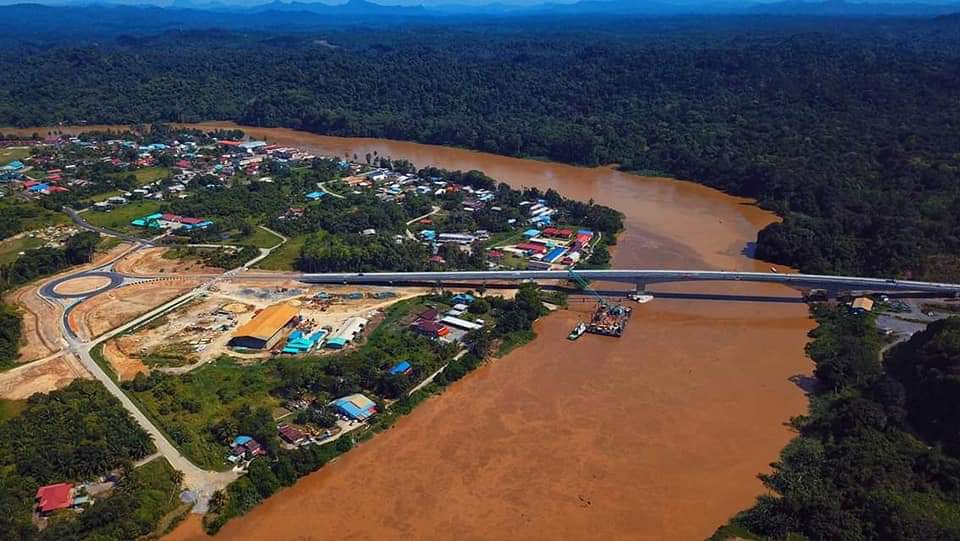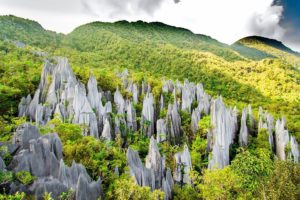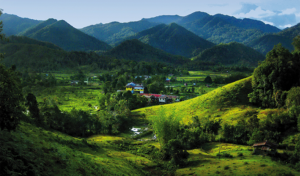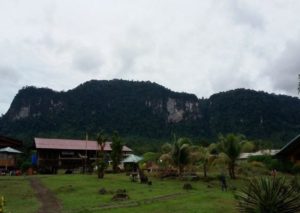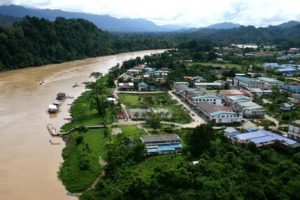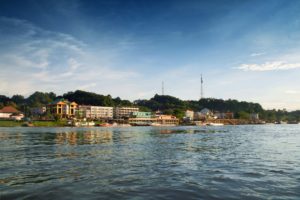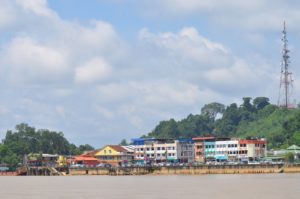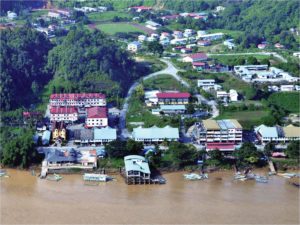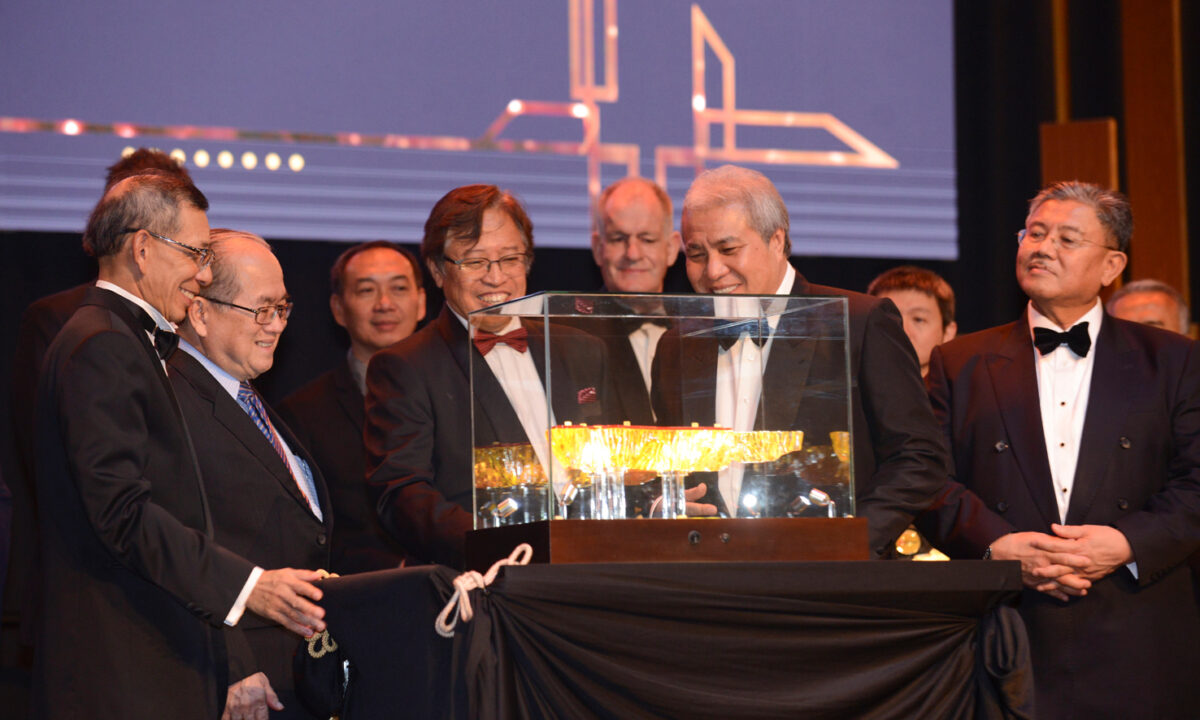
It has been 13 years since the Sarawak Corridor of Renewable Energy (SCORE) got off to a running start. It is now well on its way to fulfilling its comprehensive master plan to reap the benefits of a globalised economy and raising the standard of living of Sarawakians.
SCORE, being one of the five economic corridors in the country envisions a high-income state where the per capita income of Sarawakians is raised along with the overall gross domestic product (GDP) of the state.
Officially launched by former Prime Minister Tun Abdullah Ahmad Badawi on February 11, 2008 in Bintulu, SCORE is the brainchild of former Chief Minister and the current Yang di-Pertua Negeri Tun Pehin Sri Abdul Taib Mahmud, in line with the vision of the Politics of Development for Sarawak.
The SCORE blueprint outlines socio-economic, commercial and industrial sectors to be opened up in its vast region of development areas to benefit the local population and to achieve equitable distribution of wealth, particularly among rural residents.
The Corridor originally stretches from Tanjung Manis in Mukah to the Samalaju Industrial Park (SIP) in Bintulu, covering a total area of 70,000km² before being expanded to over 100,000km² on January 9, 2018, incorporating the northern region that encompasses Limbang and Lawas.
Managing the economic corridor is the Regional Corridor Development Authority (RECODA), a statutory body, tasked with not only planning and implementing socio-economic and infrastructure development, but also attracting investment to the state and creating job opportunities for Sarawakians.
The key advantages of SCORE’s development policy are the abundance of natural resources, including vast tracts of land for agriculture, huge reserves of coal and natural gas and the availability of competitively-priced clean, renewable hydro-electric power.
The idea is to allow investors, especially in the energy intensive industries, to take advantage of Sarawak’s competitive electricity tariff.
Readily available hydropower is channelled to designated growth nodes scattered throughout the corridor such as SIP, Tanjung Manis, Mukah, Baram and Limbang and Lawas.
A total of 12 priority sectors have been identified by the government for development, encompassing a whole range of industries, from downstream oil-based production to world-class high-tech ventures such as state-of-the-art aluminium and ferroalloy smelters as well as polycrystalline silicon production.
The identified industries are oil & gas industry, aluminium, steel, glass production, tourism, palm oil industry, timber-based industries, livestock, aquaculture, marine engineering, biotechnology and digital economy.
Through the high-impact industries in the corridor and its hinterland, the government seeks to boost investments to the tune of RM334 billion with 2.5 million jobs to be created by 2030.
Out of the RM334 billion of total planned investments, RM267 billion will come from the private investments while the remaining RM67 billion from government investments in the form of building infrastructures.
Initial Milestones
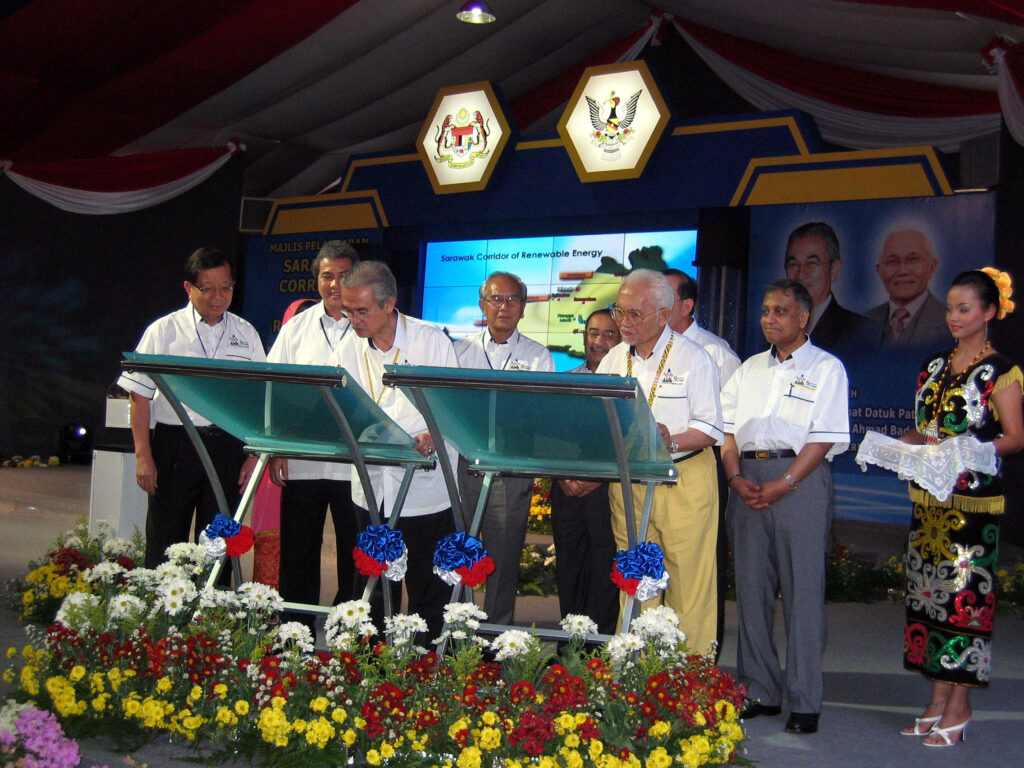
SCORE has seen a flurry of activities since its launch 13 years ago. In 2009, the aluminium smelting giant Press Metal began its operations in Balingian, Mukah, while construction began for SIP in 2009.
By February 2011, an earth-breaking ceremony was held for SIP’s first venture, Japan-based Tokuyama’s polycrystalline silicon factory. By April that year, another ground-breaking ceremony was held for Press Metal’s smelting plant at SIP.
The same month, Sarawak Energy Bhd (SEB) signed four Power Purchase Agreements (PPAs) with four SCORE investors – OM Materials Sarawak, Asia Minerals Ltd, Press Metal Bhd and Tokuyama Malaysia Sdn Bhd.
By June 2011, SEB and Sarawak Hidro Sdn Bhd signed a 30-year PPA for the full output of the Bakun hydroelectric facilities, as the hydro-power dam began generating electricity.
As more PPAs were inked with SCORE investors the following year, further ground-breaking ceremonies were held at SIP for Pertama Ferroalloys Sdn Bhd’s manganese alloys and ferrosilicon smelting plant and OM Materials (Sarawak) Sdn Bhd’s ferro alloy smelting plant. By November 2012, Press Metal’s aluminium smelting plant saw its initial commissioning.
Other major projects within the SCORE region include the launch of the Tanjung Manis Halal Hub in 2009, the start of operations of the Mukah coal-fired power plant within the same year, the commissioning of the construction of the new Mukah Airport, which began in 2014 and completed middle of June this year as well as the official start of operations of the Samalaju Port.
Construction for the Balingian Coal Fired Power Plant began in 2015, while the Mukah Biomass Power Plant was launched the same year. The following year, the 944MW Murum Dam was officially launched.
In 2017, the Samalaju Industrial Port commenced Phase 1 operations while Sarawak Energy completed its acquisition of the 2,400MW Bakun dam from the Federal government.
The Samalaju Industrial Port, with specialised terminals to cater for the heavy industries in the region, is being developed to complement the Bintulu Port to fulfil the increasing import and export activities.
Three Regional Development Agencies
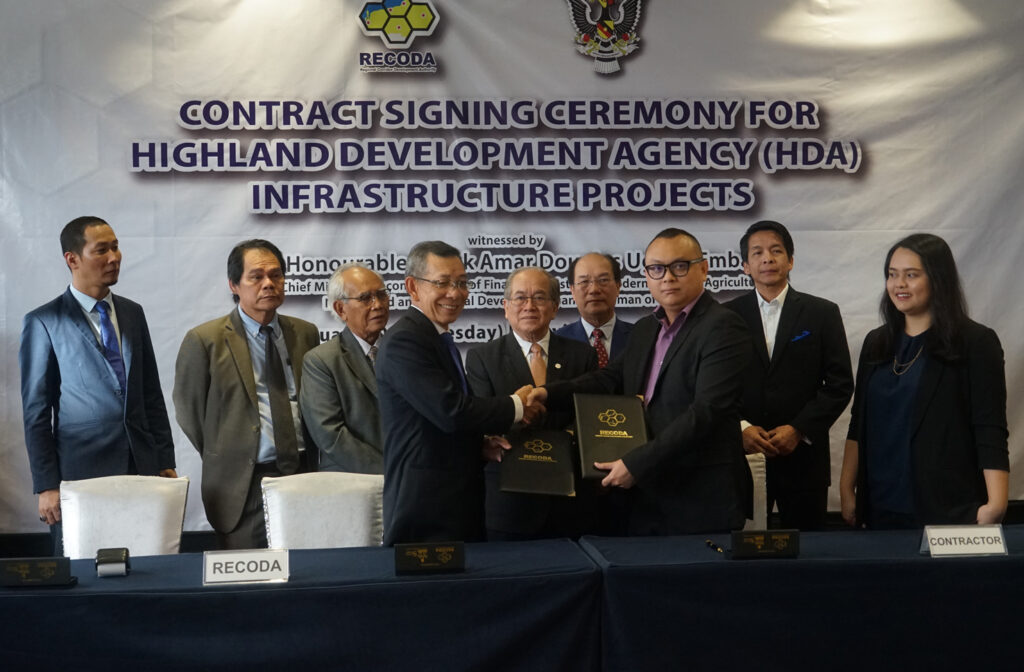
With most of the areas in Sarawak which are still under-developed, there is an urgent need to open up these rural and hinterland areas which have huge economic potentials.
Hence, the Chief Minister Datuk Patinggi Tan Sri Abang Johari Tun Abang Openg established three development agencies – Upper Rajang Development Agency (URDA), Highland Development Agency (HDA) and Northern Region Development Agency (NRDA), under the wings of RECODA in 2017.
Their collective objective is to implement infrastructure and amenities, as well as socio-economic projects and programmes in the central region, the hinterland and the northern region to bridge the urban and rural divide, raising the standard of living of local communities.
By connecting the missing dots to these rural areas, it will bring investments into these areas, thus uplifting the livelihood of the people.
Notably, the board of each agency is chaired by a Deputy Chief Minister – URDA by the late Tan Sri James Masing, HDA by Datuk Amar Douglas Uggah Embas and NRDA by Datuk Amar Awang Tengah Ali Hasan. Spearheaded by RECODA Board Chairman, who is the Chief Minister, the inclusion of key leaders and representatives of federal and state agencies reflects the State Government’s commitment in spurring the development in these areas.
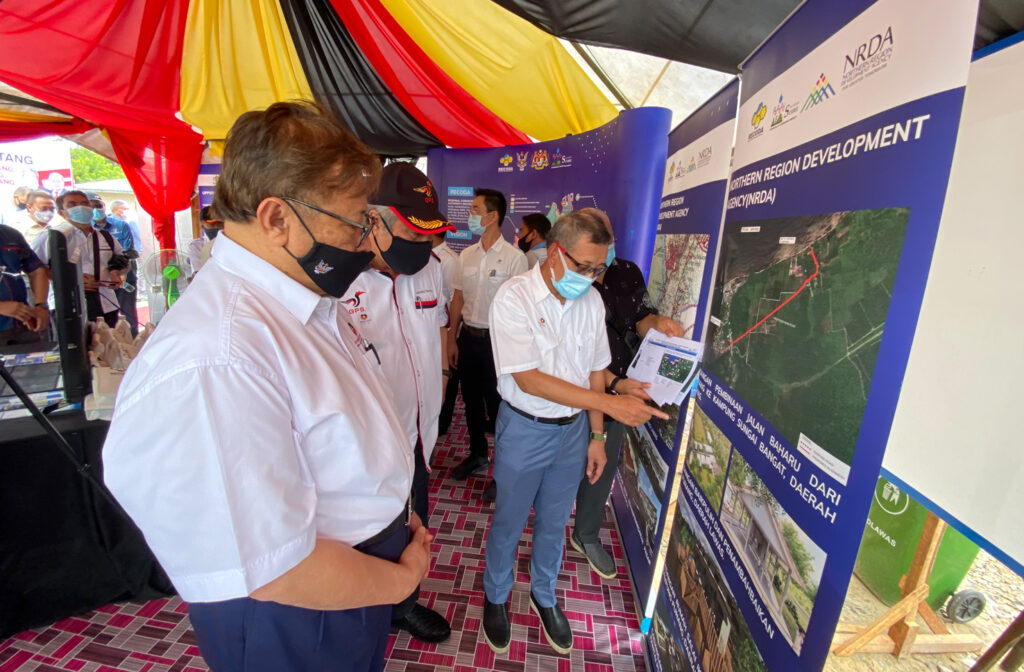
The rollout of socio-economic and infrastructure projects for the three development agencies began in 2019, with a total allocation of RM4.5 billion in financing for a total 263 projects.
Each agency is allocated with RM1.5 billion to carry out development projects, comprising roads, bridges, water and electricity supplies, telecommunications, improvement and other smaller projects such as the repair of dilapidated school projects.
This is in line with the Sarawak Government’s rural development agenda to improve connectivity through the upgrading of road infrastructure and public amenities, which serves as a foundation to reduce wealth disparities, as well as to support employment opportunities and livelihood of rural communities. These projects also serve as enablers for investments in the rural and hinterland areas of SCORE.
In terms of major investments made in SCORE region thus far, there has been a total private and public investments of RM71.1 billion as of October 2021.
SCORE receives a mix of foreign and domestic investors, with foreign direct investments (FDIs) comprising 36.7% of all investments, 58.2% domestic and 5.1% joint ventures as of 2020.
With strategic infrastructure development projects for SCORE on track to meet the needs of investors and with further socio-economic and infrastructure development in the pipeline, RECODA’s roles have rightly expanded, especially in recent years.
This has resulted in a growing need to source and develop talents to fulfil those expanded roles.
A restructuring exercise, carried out in 2019 has led to a revamp of the organisation to ensure that the statutory body is able to function effectively and efficiently.
RECODA is also recognised as a full-fledged technical department now after receiving approval from the Federal Public Works Department (JKR) to implement projects. This has allowed RECODA to carry out much-needed socio-economic and infrastructure development projects.
Strategic Masterplans
In addition to development projects, strategic masterplans have also been drawn up to develop traditionally rural areas in order to spur growth potentials and attract renewable energy investments.
The areas in focus are overseen by the three development agencies – Bakun, Belaga and Kapit under URDA; Mulu and Bario under HDA; and Sundar, Trusan and Merapok under NRDA.
The Bakun masterplan focuses on attracting investors with its proposed lakefront township and island resort, while the Belaga masterplan focuses on town expansion and urban renewal, taking advantage of a newly-completed waterfront. The Kapit masterplan, which takes into consideration its proximity to East Kalimantan and the relocation of Indonesia’s capital to East Kalimantan, encompasses urban renewal and the expansion of a new township.
The masterplan for Mulu will take advantage of the road network linking Miri-Marudi, Marudi-Mulu (Kuala Melinau) and Long Panai-Long Lama, Miri, which will vastly improve connectivity in the area. It will focus on enhancing Mulu as a world-class tourist destination. The masterplan for Bario will focus on development of the area’s agricultural growth potential and a highland destination.
Meanwhile, the Sundar, Trusan and Merapok masterplans will leverage on the connectivity that will be provided by the proposed New Lawas Airport as well as the Northern Coastal Highway.
Northern Coastal Highway
In a recent development, a major initiative to ultimately connect the missing link of the Pan Borneo Highway from Miri, to Limbang and Lawas and then to our neighbouring state of Sabah has been backed by the Sarawak Government.
The proposed 88km Northern Coastal Highway (NCH) mega project will involve the construction of a four-lane dual carriageway of JKR R5 standard as well as linked bridges, interchanges and flyovers among others.
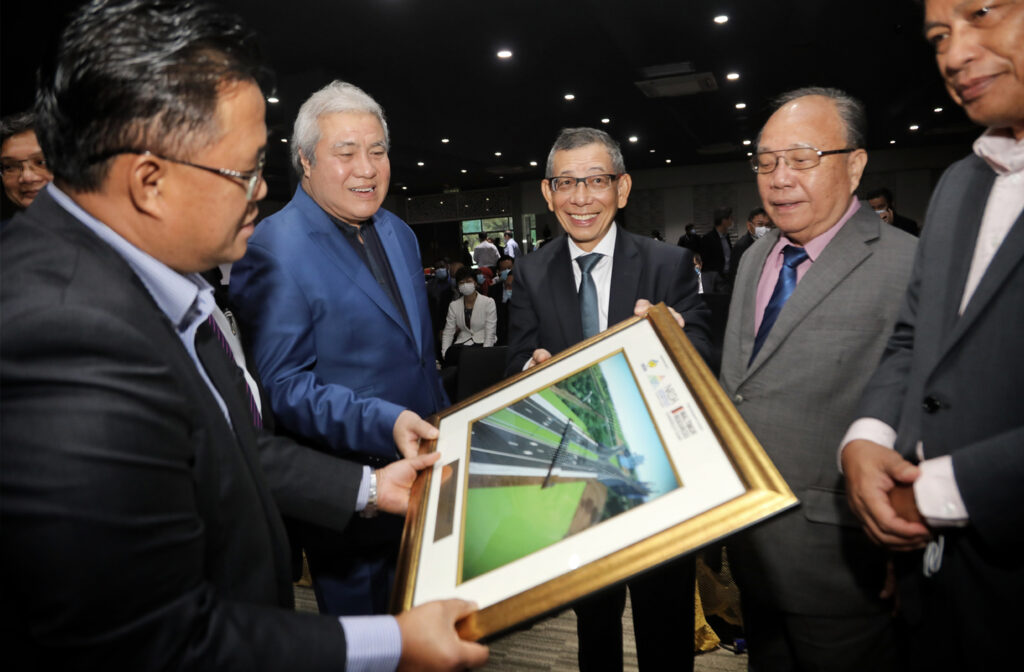
The highway will pass through Brunei via the Tedungan and Pandaruan Custom, Immigration, Quarantine and Security (CIQS) Complex in Limbang and Mengkalap and Merapok CIQS in Lawas. The NCH is expected to enhance the bilateral ties between Sarawak and Brunei Darussalam in terms of trade, investment and peoples’ mobility.
The NCH mega project, which is expected to kick start next year and take 48 months to complete, cannot come at a better time as the construction of the Pan Borneo Highway Sarawak, from Telok Melano to Pujut Link Road in Miri is currently on-going and is expected to be completed in 2023.
The proposed road alignment for the Northern Coastal Highway will incorporate future development needs such as the proposed New Lawas Airport, New Lawas Deep Water Port and the proposed Integrated Petroleum Chemical Complex in Lawas as well as other spur roads along the alignment which is crucial for the development in the region.
When the NCH is completed, it will provide Sarawakians with a complete connectivity from the southern tip of Telok Melano all the way up to the northern region of Sarawak, and then link us to Sabah.
The value assessment (VA) Lab for this project was held in September last year, where consultants, representatives and officers from various government agencies as well as other stakeholders provided input on the highway’s alignments, spur roads and other project needs.
The revised alignments have since been approved by the State Planning Authority. Subsequently, few value engineering labs were also held where all the consultants and relevant agencies deliberated at length on ways to optimise the design and cost for this project.
Miri-Marudi, Marudi-Mulu (Kuala Melinau) and Long Panai-Long Lama Road
Another signature project is the proposed roads linking Miri-Marudi, Marudi-Mulu (Kuala Melinau) and Long Panai-Long Lama, Miri.
The project seeks to enhance road connectivity via the upgrading of Miri to Marudi road and the construction of a new road from Marudi up to Long Panai forking to Long Lama. The project will also provide the long-awaited road connectivity to Gunung Mulu National Park. The estimated total length of the road network is 137km.
New Lawas Airport and Lawas Deep Water Port Complex
Other signature projects in the offing include the proposed New Lawas Airport. The existing Lawas STOLport is a Short Take Off and Landing (STOL) facility operated by Malaysia Airports Sdn Bhd. The Lawas STOLport began its operation in 1961 and was then upgraded in 1996.
The New Lawas Airport is needed due to the frequent flooding at the existing STOLport and also to boost the economy of the northern region. As such the New Lawas Airport project will be funded by the Sarawak Government with a feasibility study further recommending that the airport cater for mainly ATR 72 (Code 3C) operations.
RECODA has completed a technical study for the New Lawas Airport and the 1,500m runway, with the final report delivered to the Ministry of Transport on June 23 this year.
Also undergoing feasibility study is Lawas Deep Water Port Complex, which will support the development for the petrochemical industry in the region as well as to serve as a strategic port for the northern region. Economic, technical and environmental studies are currently being carried out to determine the technical feasibility of the project.
Baleh Access Road and Integrated Highland Agricultural Station (IHAS)
Projects that are close to completion include the access road to the Baleh Dam in the Kapit division, which is expected to be completed by the first quarter of next year after construction began in 2016. The 73km road network from Nanga Mujong to Putai in Kapit is almost completed with the construction progress reaching close to 90%.
The 1,285 MW dam in Sungai Dapu, in central Sarawak is scheduled for completion in 2026. With the access road built to reach the dam, surrounding areas will be opened up where remote villages in the area will be connected to Kapit town through roads.
The Sarawak Government through SEB is undertaking the construction of the dam, while the road is being funded by the Federal Government through RECODA and the Public Works Department (JKR) Sarawak as the implementing agency for the project.
An Integrated Highland Agriculture Station (IHAS) was completed in Baram, in the region overseen by the Highland Development Agency (HDA) under RECODA in February, 2020 after two years of construction. IHAS will serve an agriculture research & development centre that focuses on sub-temperate, high-value agriculture produce
With about 625ha of land designated by the Sarawak Government, the objective is for IHAS to be comparative to Kundasang in Sabah or Cameron Highland in Pahang. IHAS will also draw the experience of highland agriculture in Chiang Mai, Thailand.
Sarawak Petrochemical Hub
The Sarawak Petrochemical Hub in Tanjung Kidurong is located 15km north-east of Bintulu town and approximately 36km from Samalaju Industrial Park.
The hub is surrounded by energy-related developments such as Petronas LNG Complex, Shell MDS and SEB power plant, while also adjacent to the mega methanol plant that is being developed.
The Sarawak Government has acquired an area approximately 1,068 acres in Tanjung Kidurong for the purpose of developing Sarawak Petrochemical Hub.
Sarawak Economic Development Corporation (SEDC), as the owner of the land, will develop and manage the hub as well as the centralised utility facilities and other common areas, to facilitate participation by potential investors. SEDC will undertake the infrastructure development of the hub and also participate in some projects such as the float glass manufacturing plant.
Potential projects for this sector include the production of ammonia, hydrogen, methanol derivatives and other high-value-added downstream products such as float glass and siloxane and its derivatives, while potential industries include a choline chloride plant, mono ethylene plant, and propylene plant.
The hub location is ideal as it has access to feedstock, being the landing point of offshore gas fields and its close proximity to existing gas pipelines.
Mass activity such as ammonia/urea, liquefied natural gas (LNG) and Gas-to-Liquid (G-t-L) downstream industries are already present in Bintulu, coupled with the heavy industries in nearby Samalaju.
Bintulu is also equipped with infrastructure such as a deep-sea port and inter-modal road links, while a new port is being developed in Samalaju.
Last July, a ground breaking ceremony was held for the proposed state-owned Sarawak Methanol Project, which is expected to come on-stream in 2023 and will receive 160 million standard cubic feet per day (MMSCFD) of natural gas feedstock from Petronas.
China enters with Wenan Steel
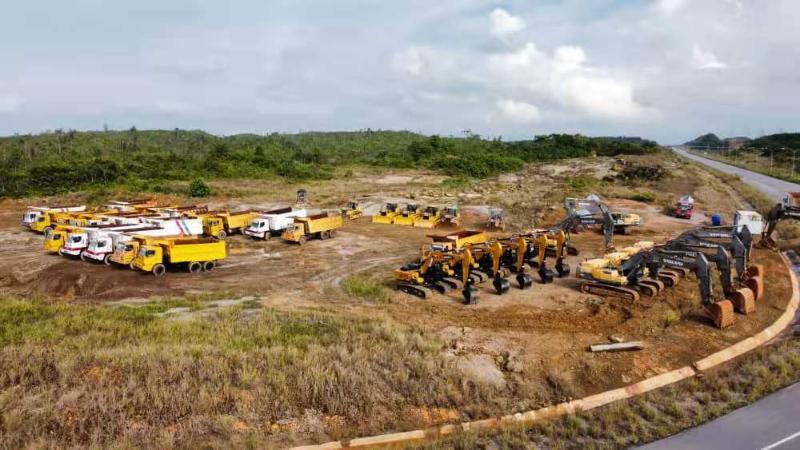
Another recent development is the approval for Wenan Steel (Malaysia) Sdn Bhd’s plans to proceed with the construction of an integrated steel plant in SIP, the first major Chinese venture into Sarawak.
This is a milestone in a facilitative journey since 2016, when the project was first conceived after the Sarawak government signed a Memorandum of Understanding (MoU) in Hubei, China with Hebei Xinwuan Steel Group and MCC Overseas Ltd to conduct preliminary feasibility studies for the development of a steel plant in Sarawak.
With a projected installed capacity of over 10 million tonnes per annum by the time all phases of construction have been completed, and employing over 4,000 workers at various stages, the RM13 billion plant will be the largest of its kind in Malaysia.
Taking up over 800ha in the 8,000ha SIP, Wenan represents not only the first major commitment by a China-based firm here in Sarawak but the largest of any firm.
Moving Forward
The development of SCORE helps every Sarawakian to look forward, in a more substantive manner, towards a brighter and more prosperous future in the process of industrialisation to transform the economy from a medium to a high-income economy by 2030 and beyond.
SCORE aims to be inclusive to ensure that every Sarawakian is able to participate in the economic activities of the state and enjoy a high-income status. No one in the rural and urban areas of Sarawak, especially in SCORE shall be left behind in the economic and social development of the state.
Building upon the foundation of the past 13 years, there is no looking back as the momentum of progress is accelerated to achieve this ambitious vision of making Sarawak an economic destination of choice in this region.


